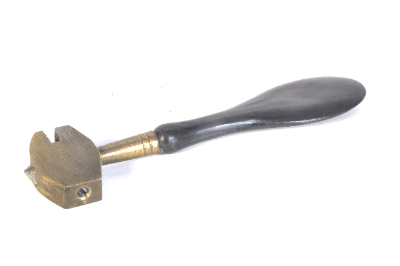What Is a Diamond Cutter?

A diamond cutter is a cutting tool designed for the precision cutting of hard materials without the need for traditional grindstones or blades.
It features a disc-shaped design embedded with diamond particles on its cutting edge. Diamond cutters are primarily used for cutting a wide range of materials including stone, ceramics, glass, alloys, and plastics. These cutters are known for their exceptionally sharp edges, enabling high-precision cutting. They offer remarkable durability and rapid cutting speeds. Due to their cutting mechanism, which involves grinding away material, they are often more efficient compared to conventional grindstones or blades. However, it’s essential to employ proper cooling methods when using diamond cutters due to the sensitivity of diamonds to heat.
Uses of Diamond Cutter
- Stone Cutting
Diamond cutters are widely employed for cutting stones such as marble, granite, limestone, and more. - Ceramics Cutting
They are used for precision cutting of ceramics, including pottery, tiles, and porcelain. - Glass Cutting
Diamond cutters are essential for cutting glass materials such as sheet glass, mirrors, and glass tubes. - Alloys Cutting
They are used in cutting alloys like stainless steel, aluminum, copper, and more. - Plastics Cutting
Diamond cutters are employed for cutting plastics such as ABS resin, polycarbonate, polyacetal, and others. - Semiconductors Cutting
They play a crucial role in cutting semiconductor materials like silicon wafers with precision.
Features of Diamond Cutter
Advantages
Diamond cutters offer numerous advantages for cutting hard materials:
- Ability to cut extremely hard materials that are challenging or impossible to cut with conventional tools due to the exceptional hardness of diamonds.
- High strength, outstanding durability, and minimal wear and deformation even during extended use.
- Efficient heat dissipation during high-speed cutting, preventing overheating due to the high thermal conductivity of diamonds.
- Exceptionally hard and durable cutting edges coated with diamond powder, allowing for high-precision cutting.
Disadvantages
However, diamond cutters also have some drawbacks:
- Higher manufacturing costs due to the need for expensive materials, as diamonds are exceptionally hard and wear-resistant.
- Susceptibility to chipping or cracking if subjected to impacts or drops due to the brittleness of diamonds, requiring careful handling.
Types of Diamond Cutters
Diamond cutters come in various types based on their shapes, including:
1. Segmented Type
This type is suitable for cutting hard materials like concrete and asphalt. It consists of segments embedded with diamond particles around the cutter’s edge.
2. Rim Type
Used for precision work on materials like ceramics and glass, the rim type features a single row of diamond particles around the cutter, resulting in a smooth cut surface finish.
3. Turbo Type
Combining characteristics of segmented and rim types, the turbo type provides fast cutting speeds with minimal marks on the cut surface. It is commonly used for cutting ceramics, stone, and concrete.
4. Flat Type
Featuring a flat metal plate coated with diamond particles, the flat type is primarily used for cutting softer materials like rebar. It is typically attached to power tools such as circular saws and hand cutters.
How to Use a Diamond Cutter
The process of using a diamond cutter for material cutting involves several steps:
1. Preparation
- Secure the material to be cut.
- Attach the diamond cutter to the cutting device.
- Adjust parameters such as rotation speed, feed rate, and coolant supply as needed.
2. Start Cutting
- Bring the diamond cutter into contact with the material.
- Initiate the cutting process, ensuring that the cutter rotates at an appropriate angle to the cutting surface.
- Gradually press the rotating cutter into the material.
3. Progressive Cutting
- Advance the diamond cutter along the material, adjusting cutting conditions as necessary.
- Ensure proper coolant supply to extend the life of the diamond cutter and achieve a smooth cut surface.
4. Completion of Cutting
Finish the cut, removing any cutting debris or dust generated during the process.
5. Finish the Cut Surface
If required, use appropriate tools to smooth the cut surface.
Other Information on Diamond Cutter
1. Classification Based on Usage Environment
There are two types of diamond cutters based on their usage environment:
Wet Diamond Cutter: Utilizes water for cooling during cutting, minimizing dust dispersion, and ensuring high-quality cutting of hard materials like stone, tiles, ceramics, and concrete.
Dry Diamond Cutter: Cuts materials without the use of water. While it may result in more dust and a rougher cut surface compared to wet cutters, it is suitable for portable power tools and indoor use, commonly used for cutting softer materials like wood, plastic, and metal.